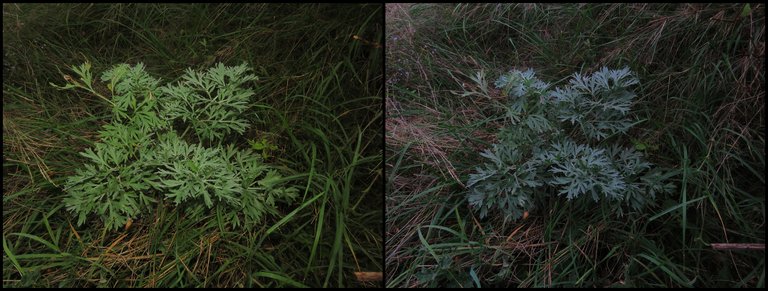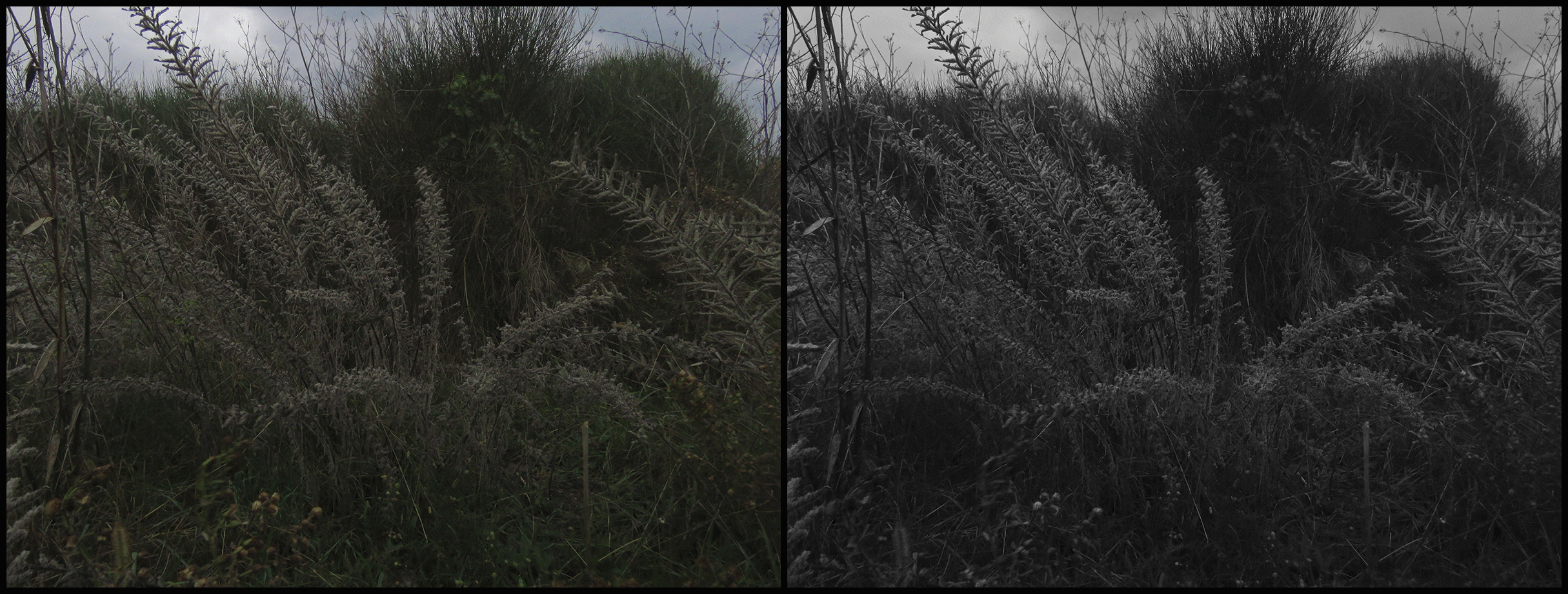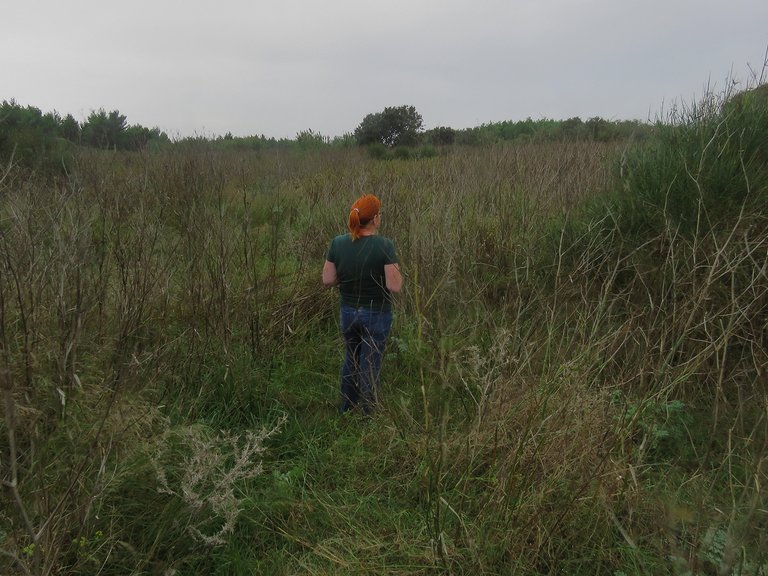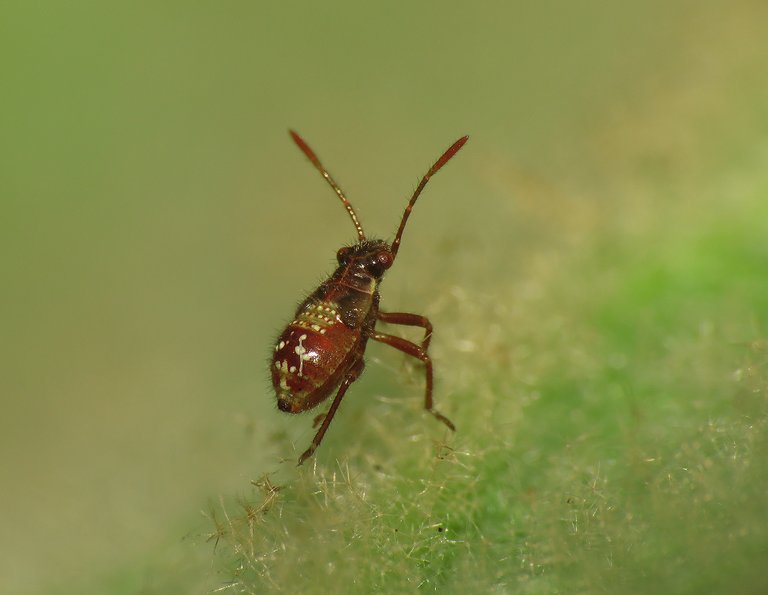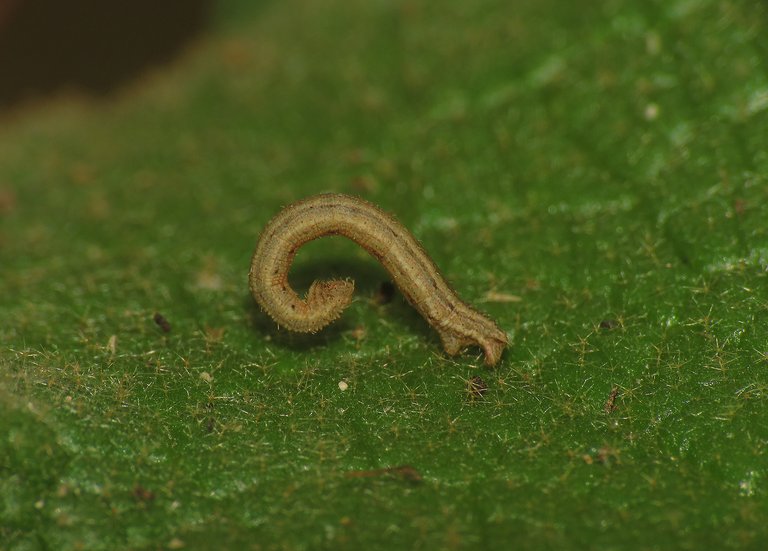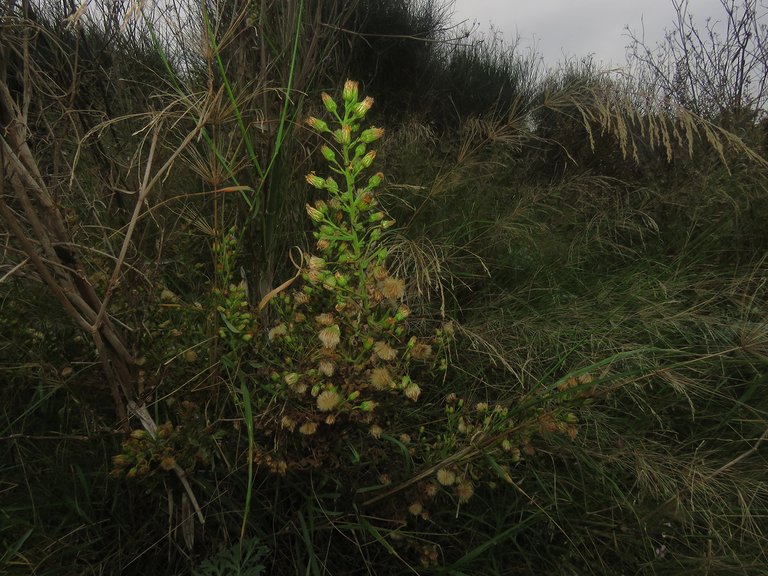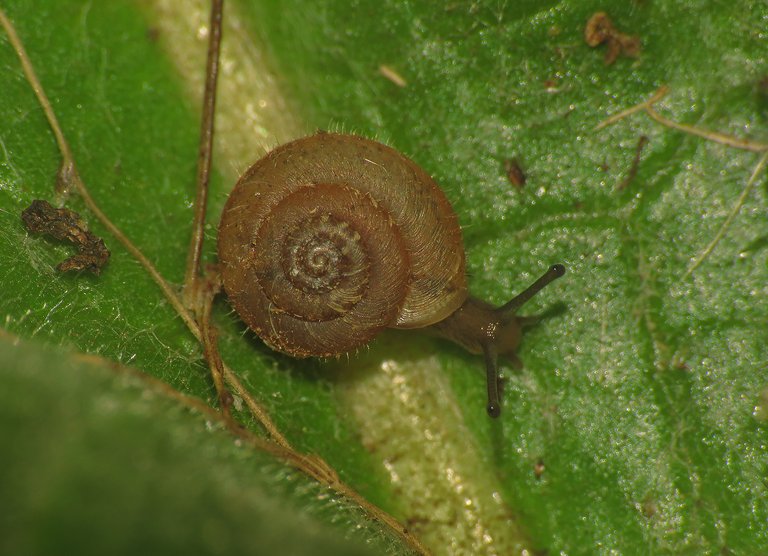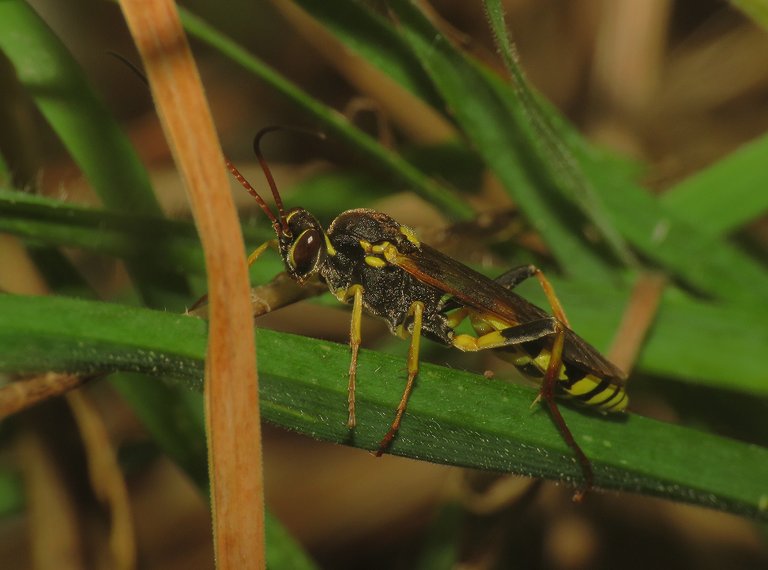On the penultimate day of October, the weather was far from favorable to macrophotography. The light was pretty low in that gloomy weather and the wind was blowing. But even so, I ended up catching enough insects for this episode, and I caught one interesting little spider too. The most interesting part is that if we exclude the difficulties the wind and low light created for macro, the nature around me looked very dramatic and inspiring on that cloudy day.
As always in this series, everything presented here was photographed in Marlera, the coastal area situated a couple of kilometers from the village of Liznjan and about five or six kilometers from where I live. Have a good viewing.

As I said at the beginning, the wind was blowing, so the taller plants around me were constantly moving, but ...
... but close to the ground, everything was quiet. Here you can see a well-camouflaged Tylopsis lilifolia bushcricket resting on the Artemisia absinthium plant.
From a distance, the bushcricket was very hard to notice.

Always on the same plant, I also photographed this Austroasca vittata leafhopper.
In these two shots, you can see the entire plant photographed with and without the flash.
Here you can see the dry stems of Echium italicum plants swaying in the wind, while in the following photograph ...
... you can see a bigger stretch of the scenery that includes a friend who was there with me.
This colorful little bug from the Rhopalidae family ...
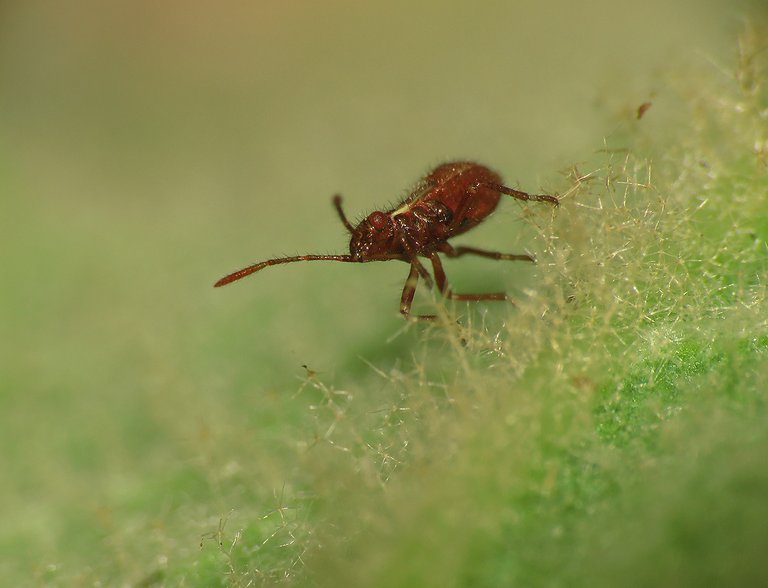
... was crawling around the large juicy leaves of the Verbascum undulatum plant.
This is a young, third-instar nymph of the Liorhyssus hyalinus bug.
I found some very interesting stuff on the large, flat rosette formed by the Verbascum undulatum leaves ...
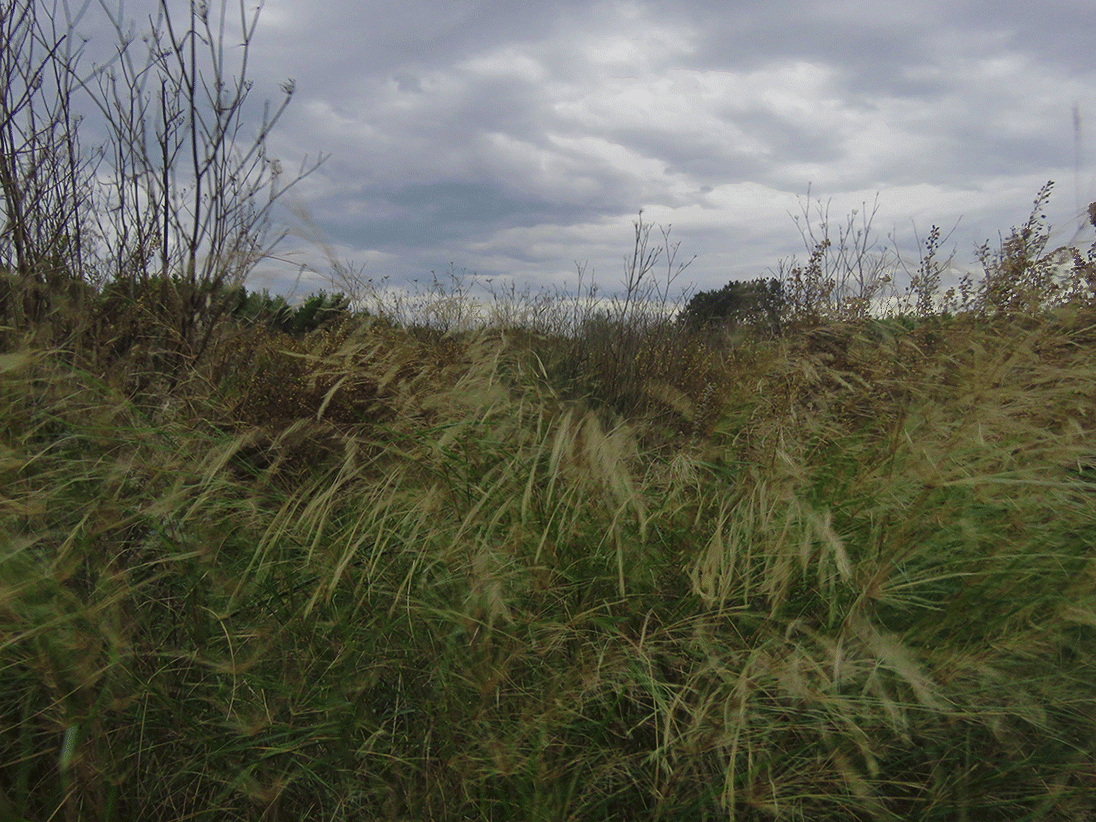
... while the surrounding grass was dancing in the wind. When the following photograph was taken ...
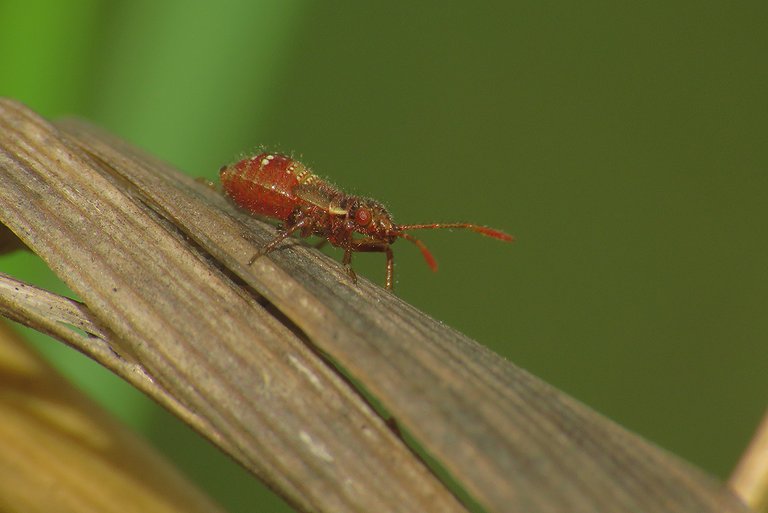
... the bug was climbing one of the dry leaves of grass close to the ground.
Here you can see a portrait of the tall and beautiful Oloptum miliaceum grass, while in the following photograph ...
... the focus is on the spider hidden in one of the small folds of the Verbascum undulatum leaf.
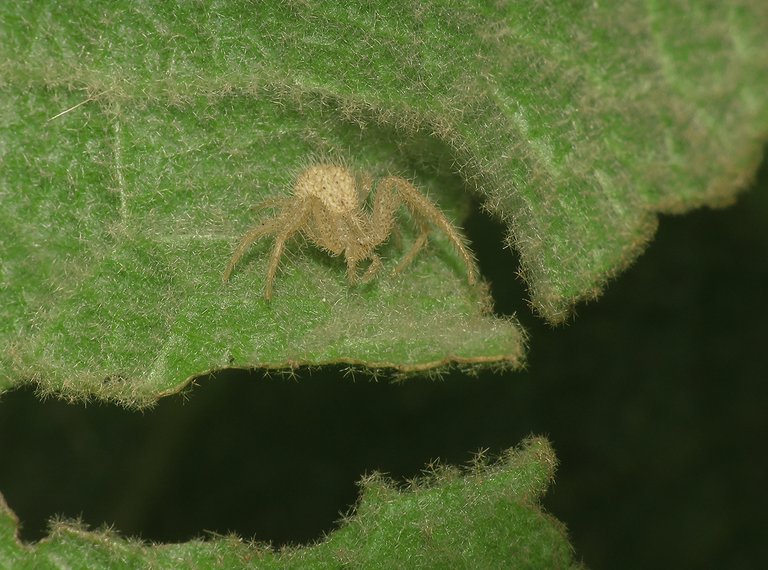
This is the Heriaeus setiger, a crab spider from the Thomisidae family.
Its color made it prominent on the green surface but its many hairs made the spider look very similar to the texture of the leaf's lower surface.
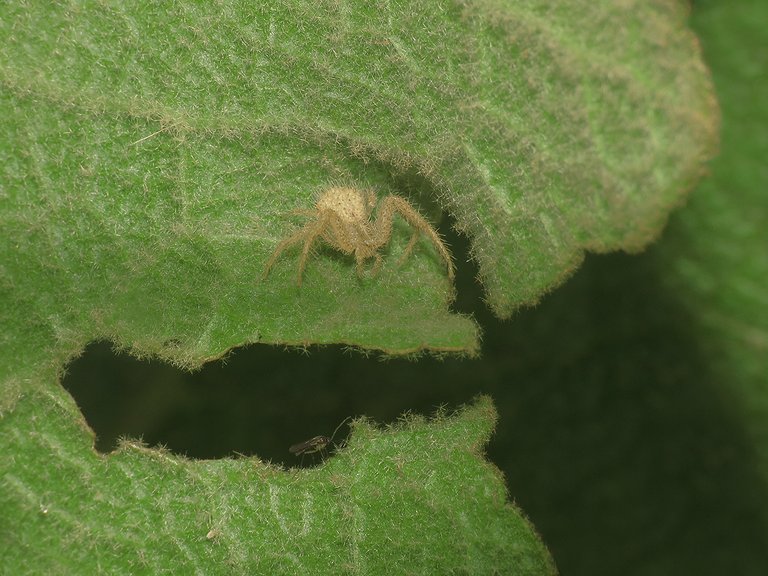
After photographing the spider ...
... I took another look at the scenery.
Here you can see a caterpillar that was resting in an interesting pose on the upper surface of the Verbascum undulatum leaf. It looks a bit like a question mark.
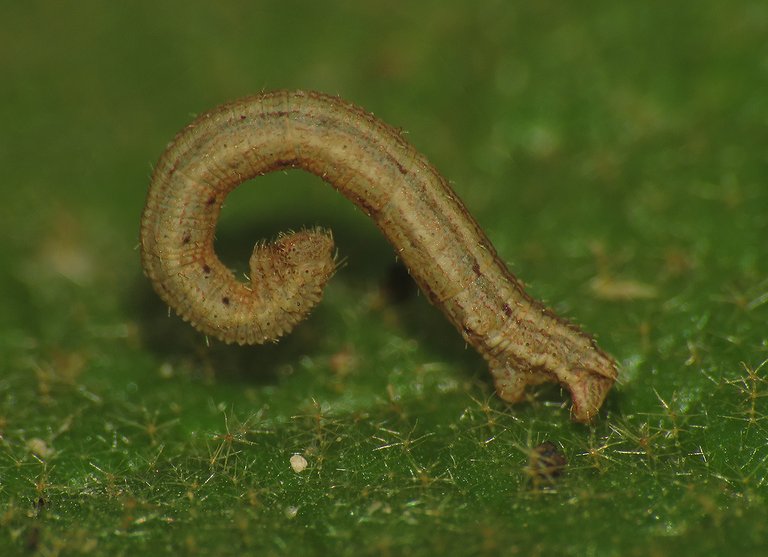
This is the larval stage of a moth from the genus Idaea of the Geometridae. Can't tell you what species exactly is this. Could be the Idaea ochrata, for example. Or the Idaea aureolaria.
Here you can see a portrait of the Dittrichia viscosa plant surrounded by grass. In the following GIF...

... a group of plants of the same kind is harmoniously dancing in the wind.
This snail with an interesting shell sparsely covered with hair, was crawling across the Echium italicum leaves. In the following combination of a GIF and the still image ...
... you can see the dry stems of that plant.
Regarding the snail, the name of the species is Trochulus hispidus. It belongs to the Hygromiidae family.
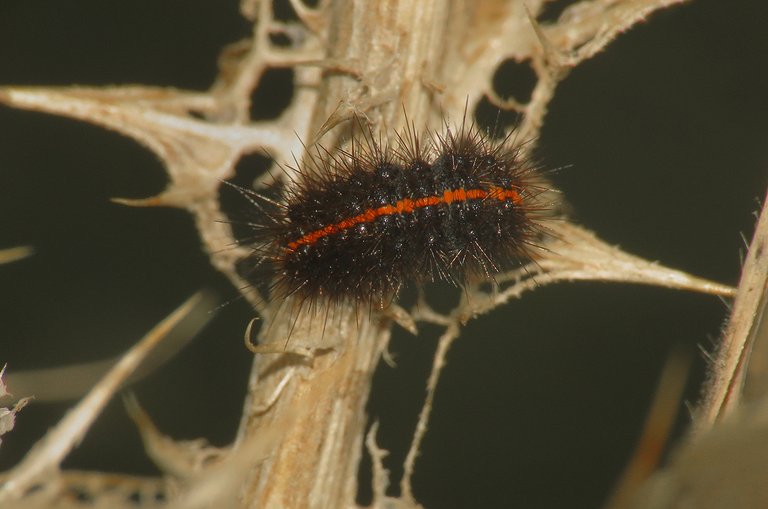
This caterpillar was resting on the dry remains of the Scolymus hispanicus thistle. I can fairly confidently say that this is the larval stage of a moth from the Erebidae family. However, I don't know what species this could be.

Here you can see the same larva photographed in ambient light.
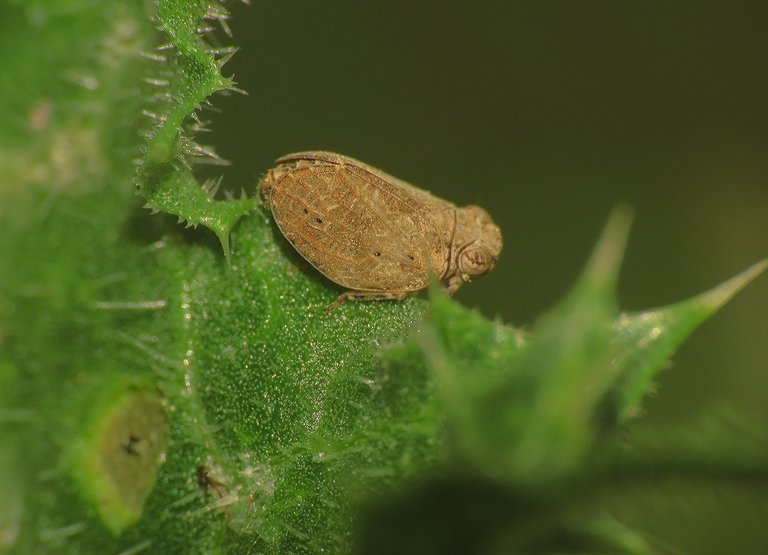
Not far from there, on one of the young, green Scolymus hispanicus thistles, I found this planthopper from the Issidae family. The name of the species is Agalmatium bilobum.
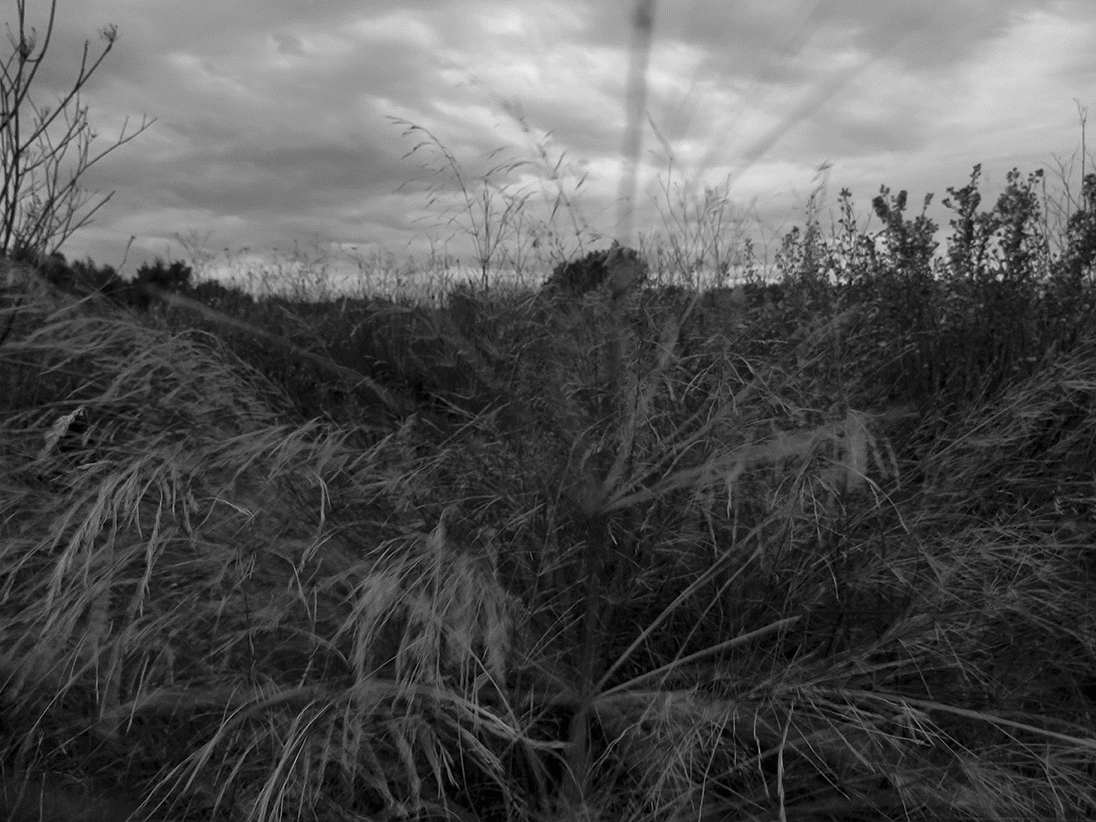
In this black-and-white GIF, you can see the grass moving in the wind again.
This wasp from the Ichneumonidae family was trying to fly but the wind was creating some problems, so in the end, the insect decided to find shelter in the grass and spend the day there. After I took this photograph the wasp disappeared in the intricate vegetation near the ground. Can't tell you the name of the species.
This is the Subcoccinella vigintiquattuorpunctata, a herbivore/fungivore beetle from the Coccinellidae family. It's a ladybeetle species, in other words.
And that's it. I don't have anything else to show in this windy episode. As always here on Hive, the photographs are my work.
The following links will take you to the sites with more information about some of the protagonists of this post. I found some stuff about them there.
https://en.wikipedia.org/wiki/Tylopsis_lilifolia
https://en.wikipedia.org/wiki/Artemisia_absinthium
https://www.truehopperswp.com/species/austroasca-vittata
https://en.wikipedia.org/wiki/Echium_italicum
https://en.wikipedia.org/wiki/Liorhyssus_hyalinus
https://eol.org/pages/1208850
http://www.pyrgus.de/Idaea_aureolaria_en.html
https://www.naturespot.org.uk/species/hairy-snail
https://truehopperswp.com/species/agalmatium-bilobum
https://en.wikipedia.org/wiki/Subcoccinella_vigintiquatuorpunctata



